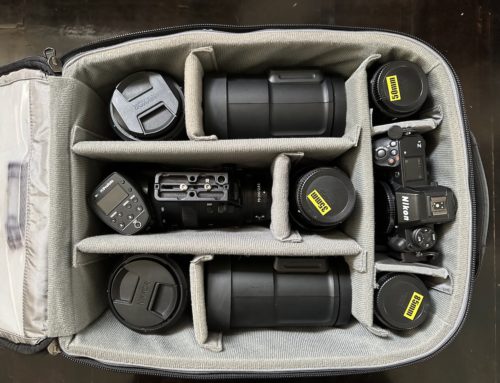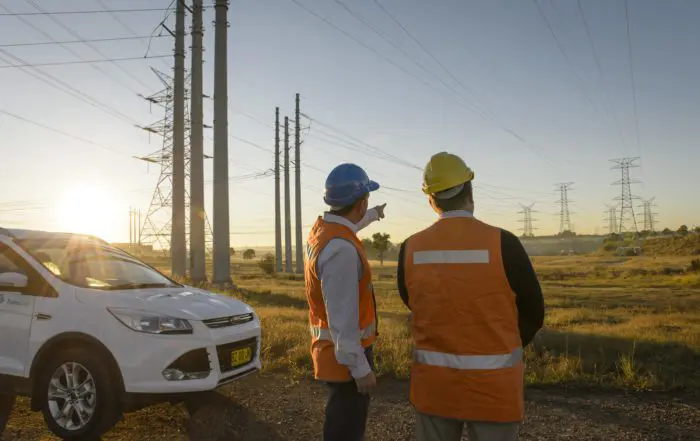
Shooting The Breeze is a photography blog by Gavin Jowitt, an award-winning Sydney-based photographer, offering valuable articles and advice on corporate, industrial, and architectural photography; life and photography in Sydney; and running a successful photography business.
How much do photographers earn?

Unveiling the earnings: A comprehensive look at photographer salaries in Australia
The photography industry in Australia is a diverse and thriving sector, contributing significantly to the nation’s creative economy. It encompasses a wide range of genres, from portrait and wedding photography to commercial and fine art photography, as well as photojournalism. The industry has experienced steady growth in recent years, with an increasing number of Australians appreciating the art and importance of professional photography services. This growth can be attributed to the rise of digital technology, making photography more accessible and opening up new possibilities for both photographers and clients alike.
Understanding the salary structure and earning potential of photographers in Australia is crucial for several reasons. For aspiring photographers, it helps to set realistic expectations about their financial prospects in the field and make informed decisions about their career path. It also provides guidance on specialisations, niches, and regions that offer better earning potential, allowing them to tailor their skillset and marketing strategies accordingly.
For established photographers, having a clear understanding of industry salary trends is essential for evaluating their current earnings, setting competitive pricing, and identifying areas for growth and improvement. Furthermore, it enables them to negotiate fair remuneration with clients and employers while ensuring their skills and expertise are adequately valued.
Lastly, for clients and employers, understanding the salaries of photographers helps in budgeting and assessing the value of the services they are seeking. It also ensures that they are offering fair compensation, thus fostering healthy and sustainable relationships with photography professionals.
In this article, we will delve into the various factors affecting professional photographer salaries in Australia, the salary ranges for different experience levels and specialisations, and strategies for enhancing earning potential within the industry.
Factors Affecting Photographer Salaries
Experience and skill level
Entry-level photographers
Entry-level photographers are those who are just starting out in their careers and typically have less than two years of professional experience. At this stage, photographers are still developing their technical skills and building their portfolio. Consequently, their earning potential is often lower compared to more experienced professionals. According to Payscale, as of 2021, the average salary for an entry-level photographer in Australia is around AUD 40,000 per year. However, it is essential to note that this figure can vary widely depending on factors like location, specialisation, and employment type.
Mid-level photographers
Mid-level photographers have more experience in the industry, typically ranging from two to five years. They have developed a solid skill set and often have a well-rounded portfolio showcasing their work. As a result, their earning potential is higher than that of entry-level photographers. The average salary for a mid-level photographer in Australia is approximately AUD 55,000 per year, with the potential for further increases based on their reputation, client base, and specialisation.
Experienced photographers
Experienced photographers are seasoned professionals with over five years of experience in the industry. They have honed their skills, built a strong reputation, and often have a significant client base. Many experienced photographers have also chosen to specialise in a specific niche or market, which can further increase their earning potential. The average salary for experienced photographers in Australia is about AUD 70,000 per year or higher, depending on their location, specialisation, and employment type. Some top-tier photographers in high-demand niches or with an exceptional reputation can earn well over AUD 100,000 per year.
Education and certifications
Formal education in photography
While formal education in photography is not a strict requirement for success in the industry, it can provide a solid foundation in technical skills, artistry, and business aspects of the profession. Australian photographers can pursue a variety of courses and degrees, including diplomas, bachelor’s degrees, and even master’s degrees in photography or related fields such as visual arts or media production. Having a formal education in photography can positively impact a photographer’s salary, as it demonstrates a commitment to the craft and a strong foundation in the necessary skills. Graduates from reputable institutions may also have an advantage when seeking employment opportunities or attracting clients, as it lends credibility to their expertise.
Professional certifications
Professional certifications can be another way to enhance a photographer’s earning potential. Certifications are offered by various photography associations and organisations, such as the Australian Institute of Professional Photography (AIPP). The AIPP offers an Accredited Professional Photographer (APP) certification, which requires photographers to demonstrate a high level of skill, professionalism, and ethical standards.
Obtaining a professional certification can help photographers differentiate themselves from their competition, showcasing their commitment to excellence and adherence to industry standards. It can also lead to better networking opportunities, as certified photographers are often listed in directories or promoted by the certifying organisation. As a result, certified photographers may be able to command higher fees for their services, positively impacting their overall earnings. However, it is important to note that the benefits of certifications may vary depending on the photographer’s niche, location, and reputation.
Specialisation and niche markets
Wedding photography
Wedding photography is a popular and lucrative niche within the industry. Couples are often willing to invest significantly in capturing their special day, and as a result, wedding photographers can charge premium rates for their services. According to Wedding Services Australia, the average cost of wedding photography in Australia ranges from AUD 2,500 to AUD 4,500, with some high-end photographers charging even more. This niche’s earning potential depends on factors such as experience, reputation, and the ability to effectively market one’s services to prospective clients.
Portrait photography
Portrait photography includes family portraits, professional headshots, and individual portrait sessions. While not as lucrative as wedding photography, it can provide a steady income for photographers, especially if they can establish a strong local reputation and client base. Earnings in this niche will vary depending on factors such as location, experience, and the photographer’s ability to create a unique style that sets them apart from their competition.
Commercial photography
Commercial photography involves capturing images for businesses and advertising purposes, such as product photography, architectural photography, or corporate events. This niche often requires a higher level of technical skill and equipment, but the earning potential can be quite substantial. Commercial photographers typically charge by the project or by the hour, with rates varying widely depending on the complexity of the project and the photographer’s experience. Top commercial photographers can earn well over AUD 100,000 per year, although this will depend on factors such as their client base and reputation.
Photojournalism
Photojournalism involves capturing newsworthy events and stories for media outlets, such as newspapers, magazines, and online publications. Photojournalists are often employed by news organisations or work as freelancers. While this niche can be exciting and fulfilling, it is also highly competitive, and the earning potential may not be as high as in other specialisations. According to Payscale, as of 2021, the average salary for a photojournalist in Australia is around AUD 50,000 per year. However, this figure can vary depending on factors such as experience, location, and the photographer’s ability to secure consistent work with reputable publications.
Fine art photography
Fine art photography is a niche that focuses on creating artistic images for galleries, collectors, and exhibitions. It can be a challenging field to break into, as it relies heavily on an individual’s unique vision, creativity, and ability to market their work effectively. Earning potential in fine art photography varies widely, as it depends on factors such as the photographer’s reputation, the demand for their work, and their ability to sell prints or secure gallery representation. Some fine art photographers can earn a comfortable living, while others may struggle to generate a consistent income. However, for those with a passion for artistic expression and a unique vision, it can be a rewarding career path.
Geographic location
Major cities vs. rural areas
The location in which a photographer operates can significantly impact their earning potential. In major cities like Sydney, Melbourne, and Brisbane, there is typically a higher demand for photography services due to the larger population and a greater concentration of businesses and events. As a result, photographers based in urban areas may have access to more clients and opportunities, which can lead to higher earnings. However, competition can also be more intense in major cities, making it essential for photographers to differentiate themselves and effectively market their services.
In contrast, rural areas may have a lower overall demand for photography services due to the smaller population and fewer businesses. However, photographers operating in these regions may have less competition and could potentially become well-known within their local community. This can lead to a more stable and consistent client base, although the overall earnings may be lower than in urban areas.
Cost of living and local demand
The cost of living in a particular location can also influence a photographer’s salary, as it affects the pricing of their services. In areas with a higher cost of living, photographers may need to charge higher rates to cover their expenses and maintain a sustainable income. This can result in higher overall earnings, provided there is sufficient demand for their services at those price points.
Local demand for photography services can vary depending on factors such as the demographics of the area, the presence of businesses and industries that require photography, and the popularity of specific niches like wedding or portrait photography. Understanding the local market and tailoring one’s services and marketing strategies to meet the specific needs and preferences of the community can be crucial in maximising earning potential in any geographic location.
Employment type
Freelance photographers
Freelance photographers operate as self-employed professionals, offering their services on a per-project basis to various clients. This employment type provides greater flexibility in terms of work hours and creative control. However, it also requires photographers to handle their marketing, client acquisition, and business administration. The earning potential for freelance photographers can vary widely depending on factors such as experience, reputation, specialisation, and the ability to secure consistent work. While some freelancers can earn a comfortable living, others may struggle with the unpredictability of their income and the need to constantly market themselves to attract new clients.
In-house photographers
In-house photographers are employed by a company or organisation to provide photography services exclusively for their employer. This can include businesses that require product photography, media companies, or even educational institutions. In-house photographers typically enjoy a more stable income, with regular hours and the security of a consistent salary. However, they may have less creative control and flexibility compared to freelancers, as their work is dictated by the needs of their employer. The average salary for in-house photographers in Australia ranges from AUD 45,000 to AUD 70,000 per year, depending on factors such as experience, location, and the employer’s industry.
Photography studio employees
Photography studio employees work for an established photography business, providing services to the studio’s clients. This can include portrait studios, wedding photography businesses, or commercial photography studios. Like in-house photographers, studio employees typically enjoy a more stable income and regular hours, with less responsibility for marketing and client acquisition. However, their earning potential may be lower compared to freelancers, as they are usually paid a salary or hourly wage rather than receiving a percentage of the fees charged to clients. The average salary for photography studio employees in Australia ranges from AUD 40,000 to AUD 60,000 per year, depending on factors such as experience, location, and the size and reputation of the studio.
Networking and reputation
Importance of building a strong portfolio
A strong portfolio is essential for photographers seeking to establish themselves in the industry and maximise their earning potential. It serves as a visual resume, showcasing the photographer’s technical skills, creativity, and ability to deliver high-quality images in their chosen niche. A well-curated portfolio can help photographers attract clients, secure job opportunities, and negotiate higher rates for their services.
Networking within the photography community and related industries can lead to valuable connections and potential collaborations. Attending industry events, workshops, and conferences can help photographers expand their professional network, learn about new trends and techniques, and build relationships with potential clients and collaborators. Additionally, participating in photography contests and exhibitions can provide further exposure and credibility, contributing to a stronger reputation within the industry.
Client referrals and online presence
Positive client referrals and testimonials can significantly impact a photographer’s reputation and earning potential. Satisfied clients are more likely to recommend a photographer to their friends, family, and professional contacts, leading to new business opportunities and increased demand for the photographer’s services. It is crucial for photographers to consistently deliver high-quality work, maintain good communication with clients, and foster positive relationships to generate strong word-of-mouth marketing.
An active and engaging online presence can also contribute to a photographer’s reputation and earning potential. By maintaining a professional website, regularly updating their portfolio, and engaging with clients and followers on social media platforms, photographers can showcase their work to a wider audience and attract potential clients. Additionally, optimising their website for search engines (SEO) and using targeted advertising campaigns can help photographers reach their desired market and increase their visibility online, ultimately leading to higher earnings.
Australian Photographer Salary Ranges
National average
As of 2021, the national average salary for professional photographers in Australia is approximately AUD 55,000 per year. However, this figure can vary significantly depending on factors such as experience, specialisation, location, and employment type.
Salary variations by experience level
Experience plays a significant role in determining a photographer’s salary. Entry-level photographers with less than two years of experience can expect to earn around AUD 40,000 per year on average. Mid-level photographers, with two to five years of experience, can earn an average salary of around AUD 55,000 per year. Experienced photographers with over five years of experience can earn an average salary of approximately AUD 70,000 per year or higher, depending on their reputation and specialisation.
Salary variations by specialisation
Different specialisations within the photography industry can lead to variations in salary ranges. For example, wedding photographers often earn more due to the high demand and premium rates they can charge for their services. Commercial photographers can also command higher fees, particularly if they work with large businesses and advertising agencies. In contrast, photojournalists or fine art photographers may earn less on average, depending on factors such as the availability of consistent work and the demand for their specific niche.
Salary variations by location
Geographic location can also impact a photographer’s salary in Australia. Melbourne, Brisbane and Sydney photographers generally have a higher demand for photography services and a higher cost of living, which can lead to higher earning potential. However, competition is often more intense in these urban areas. In rural areas, while there may be less competition, the overall demand for photography services may be lower, leading to lower average salaries. It is crucial for photographers to understand their local market and tailor their services to meet the specific needs and preferences of their community in order to maximise their earning potential.
Strategies for Increasing Earnings as a Photographer
Pursuing higher education and certifications
Photographers can increase their earning potential by pursuing higher education in photography or related fields, such as visual arts or media production. Formal education can provide a solid foundation in technical skills, artistry, and the business aspects of the profession. Additionally, obtaining professional certifications from reputable organisations, such as the Australian Institute of Professional Photography (AIPP), can help photographers differentiate themselves from their competition, showcasing their commitment to excellence and adherence to industry standards.
Expanding into multiple specialisations
Photographers can also consider expanding into multiple specialisations to increase their earning potential. This allows them to diversify their income sources and tap into different markets. For example, a portrait photographer could expand into wedding photography or commercial photography, broadening their client base and potentially increasing their revenue. However, it’s important to maintain a balance between diversification and maintaining a strong focus on each specialisation to ensure the quality of work remains high.
Building a strong online presence and portfolio
A strong online presence, including a professional website and active social media profiles, can help photographers attract more clients and showcase their work to a broader audience. Regularly updating their portfolio with new work and engaging with clients and followers on social media platforms can contribute to increased visibility and a stronger reputation in the industry. Additionally, optimising their website for search engines (SEO) and using targeted advertising campaigns can help photographers reach their desired market and increase their online visibility.
Networking and collaborations
Networking within the photography community and related industries can lead to valuable connections and potential collaborations. By attending industry events, workshops, and conferences, photographers can expand their professional network, learn about new trends and techniques, and build relationships with potential clients and collaborators. Additionally, partnering with other professionals, such as event planners, makeup artists, or graphic designers, can help photographers increase their exposure and tap into new markets.
Pricing strategies
Developing an effective pricing strategy is crucial for photographers looking to increase their earnings. This involves understanding the local market, the target audience, and the value of their services. Photographers should consider factors such as the cost of living, the level of competition, and their own experience and specialisation when setting their prices. Regularly reviewing and adjusting pricing structures based on market trends, client feedback, and changes in the photographer’s skill set can also help ensure that their fees remain competitive and reflective of the value they provide.
Government Policies and Industry Standards
Fair Work Australia regulations
Professional photographers in Australia must adhere to the regulations set forth by Fair Work Australia, the national workplace relations system. These regulations cover a wide range of aspects related to employment, such as minimum wage, leave entitlements, and overtime pay. Freelance photographers who hire employees or work as employees themselves should familiarise themselves with these regulations to ensure they operate within the legal framework and maintain a fair working environment.
Australian Institute of Professional Photography (AIPP) standards and guidelines
The Australian Institute of Professional Photography (AIPP) is a leading professional association for photographers in Australia. They establish industry standards and guidelines to promote professionalism, ethical conduct, and best practices among photographers. AIPP membership can provide photographers with credibility, networking opportunities, and access to resources and educational materials. By adhering to AIPP standards and guidelines, photographers can demonstrate their commitment to professionalism and high-quality work, which can positively impact their reputation and earning potential.
Copyright and intellectual property considerations
Photographers should be aware of copyright and intellectual property laws in Australia to protect their work and ensure they are operating within legal boundaries. In general, photographers hold the copyright to the images they create, giving them the exclusive right to reproduce, distribute, and display their work. However, agreements with clients may include clauses that affect copyright ownership or usage rights. It is essential for photographers to understand their rights, draft clear contracts outlining the terms of use for their images, and stay informed about changes in copyright and intellectual property laws. This can help protect their work and safeguard their earning potential in the long term.
Photographer salaries in Australia can vary significantly depending on factors such as experience, specialisation, location, and employment type. On average, photographers in Australia earn approximately AUD 55,000 per year, but this figure can be higher or lower depending on individual circumstances. To maximise their earning potential, photographers should consider pursuing higher education and certifications, expanding into multiple specialisations, building a strong online presence and portfolio, networking and collaborating with other professionals, and developing effective pricing strategies.
Despite the competitive nature of the photography industry, there are ample opportunities for growth in Australia. Emerging trends, such as drone photography, virtual reality, and social media, offer new avenues for photographers to explore and expand their businesses. Additionally, the increasing importance of visual content in the digital age presents photographers with numerous opportunities to work with businesses and individuals who require professional photography services. By staying informed about industry developments and adapting to changes, photographers can seize new opportunities and continue to grow their careers.
For aspiring photographers, the Australian photography industry offers a diverse range of opportunities and the potential for a rewarding and fulfilling career. Although the path to success may not be easy, with dedication, hard work, and a commitment to learning and improvement, aspiring photographers can develop their skills, build their reputations, and ultimately achieve success in their chosen specialisation. By understanding the factors that influence earnings and implementing strategies to maximise their potential, photographers can create a sustainable and profitable career in the Australian photography industry.
References
1. Fair Work Ombudsman. Fair Work Information Statement. Retrieved from https://www.fairwork.gov.au/employee-entitlements/national-employment-standards/fair-work-information-statement
2. Australian Institute of Professional Photography. AIPP: The Industry Standard. Retrieved from https://www.aipp.com.au/
3. Australian Bureau of Statistics. Average Weekly Earnings, Australia. Retrieved from https://www.abs.gov.au/statistics/labour/earnings-and-work-hours/average-weekly-earnings-australia
4. Australian Government. Intellectual Property and Copyright. Retrieved from https://www.business.gov.au/Planning/Business-planning/Intellectual-property-and-copyright
5. Payscale. Average Photographer Salary in Australia. Retrieved from https://www.payscale.com/research/AU/Job=Photographer/Salary
6. Indeed. Photographer Salaries in Australia. Retrieved from https://au.indeed.com/career/photographer/salaries
7. Australian Communications and Media Authority. Drones and the Civil Aviation Safety Regulations. Retrieved from https://www.acma.gov.au/drones-and-civil-aviation-safety-regulations
8. Australian Government. Arts and Cultural Funding Program. Retrieved from https://www.create.nsw.gov.au/funding-and-support/arts-and-cultural-funding-program/
About the author
Gavin Jowitt is an accomplished corporate communications and branding professional with over 30 years of experience as a creative director and photographer. Awarded Australian Commercial Photographer of the Year in 2019, Gavin has built a reputation for delivering high-quality photography that enhances stakeholder communication. Gavin works with a wide array of public and private sector clients, guiding them in creating versatile photography libraries while offering extensive corporate, industrial, and commercial photography services throughout Australia.
Recent posts
Victoria Cross: Photographing North Sydney’s New Metro Station
Photographing Victoria Cross station captured its sleek design and functionality, showcasing how it transforms North Sydney’s urban landscape and connectivity.
The Art of Clean: Why Dyson Demands the Highest Quality Product Photography
Dyson's unwavering commitment to visual excellence and how it has shaped their brand identity in the minds of consumers.
Tips for Planning and Arranging a Photoshoot at Your School
In today’s digital age, visual content is one of the most potent ways to engage and inspire prospective students, parents, and staff. Whether for a new school prospectus, website, or social media, professional education photography [...]
Transgrid’s Innovative Use of Photography
Transgrid is illuminating the human and technical side of Australia's energy infrastructure through captivating visual storytelling.
The Power of Lifestyle Product Photography
A deep dive into the world of lifestyle product photography, with a focus on Victa Australia's journey to creating powerful visual connections with their customers.
Sydney Photographer / Featured Service / Corporate Headshots in Sydney
As a professional Sydney-based photographer specialising in corporate headshots, I recognise the significance of top-quality images for building the professional profiles of your key personnel. My expertise is crafting professional headshots highlighting confidence, character, and professionalism.
> Headshot pricing and book online








